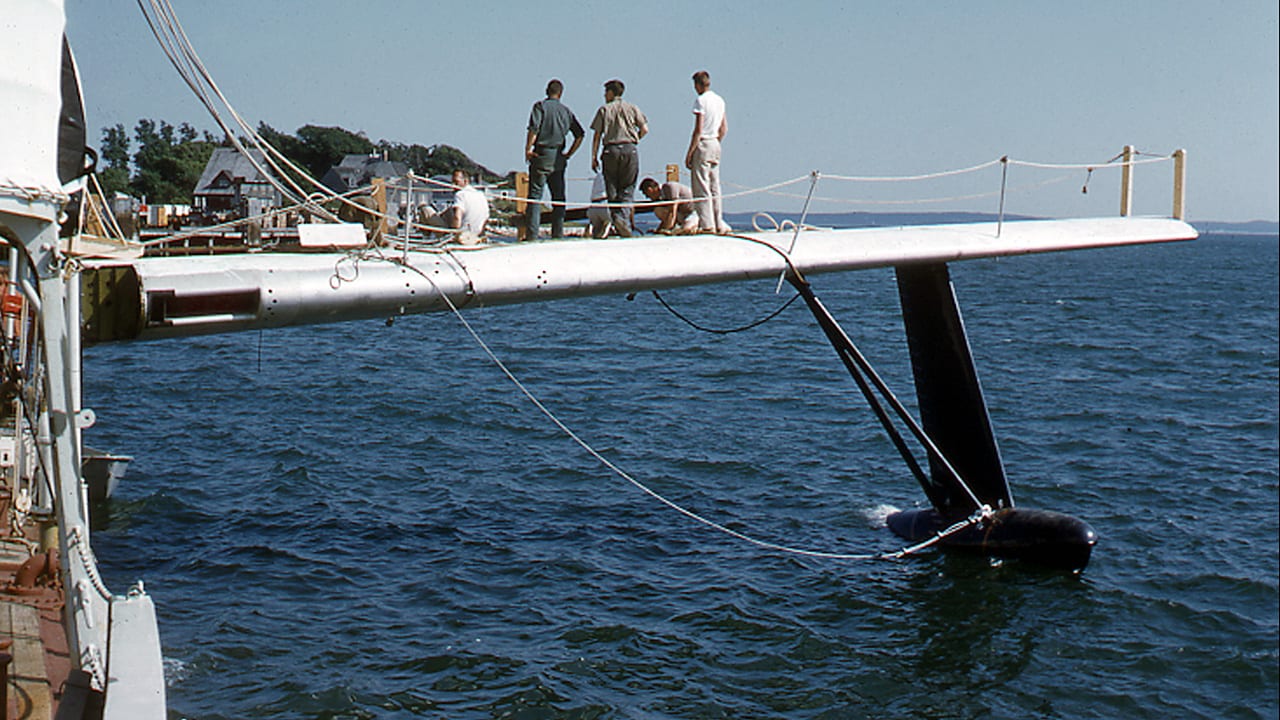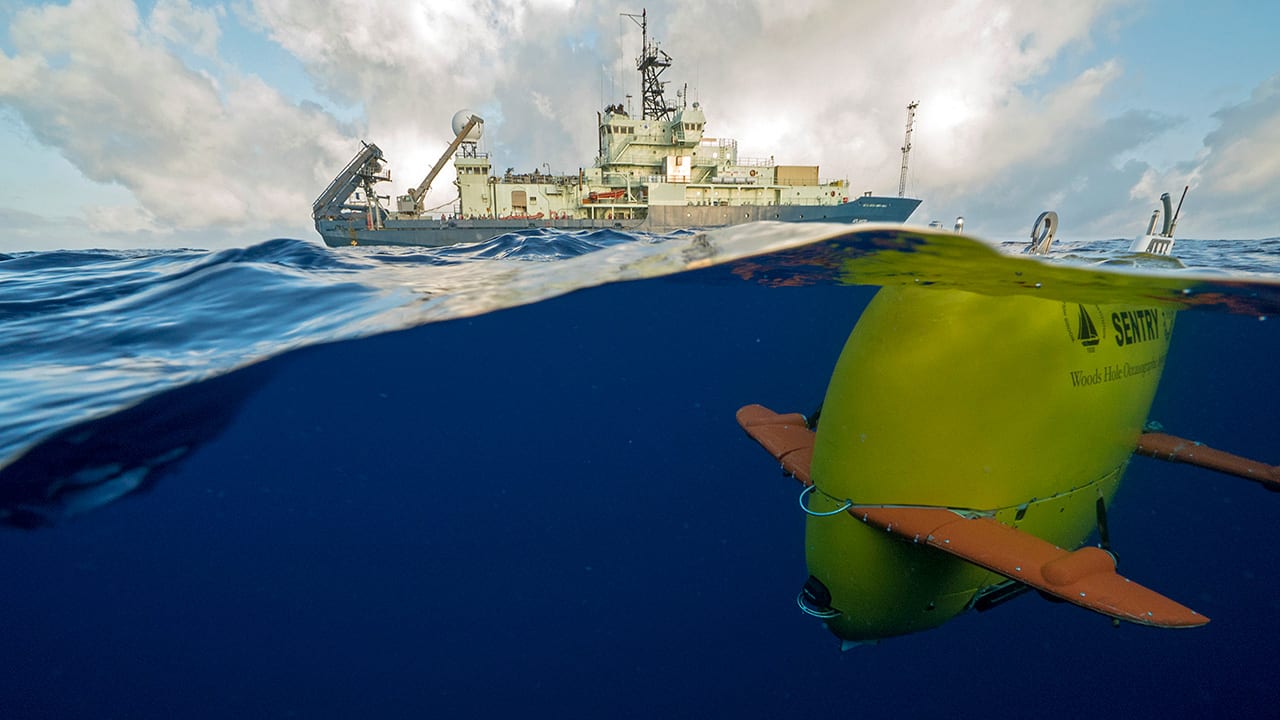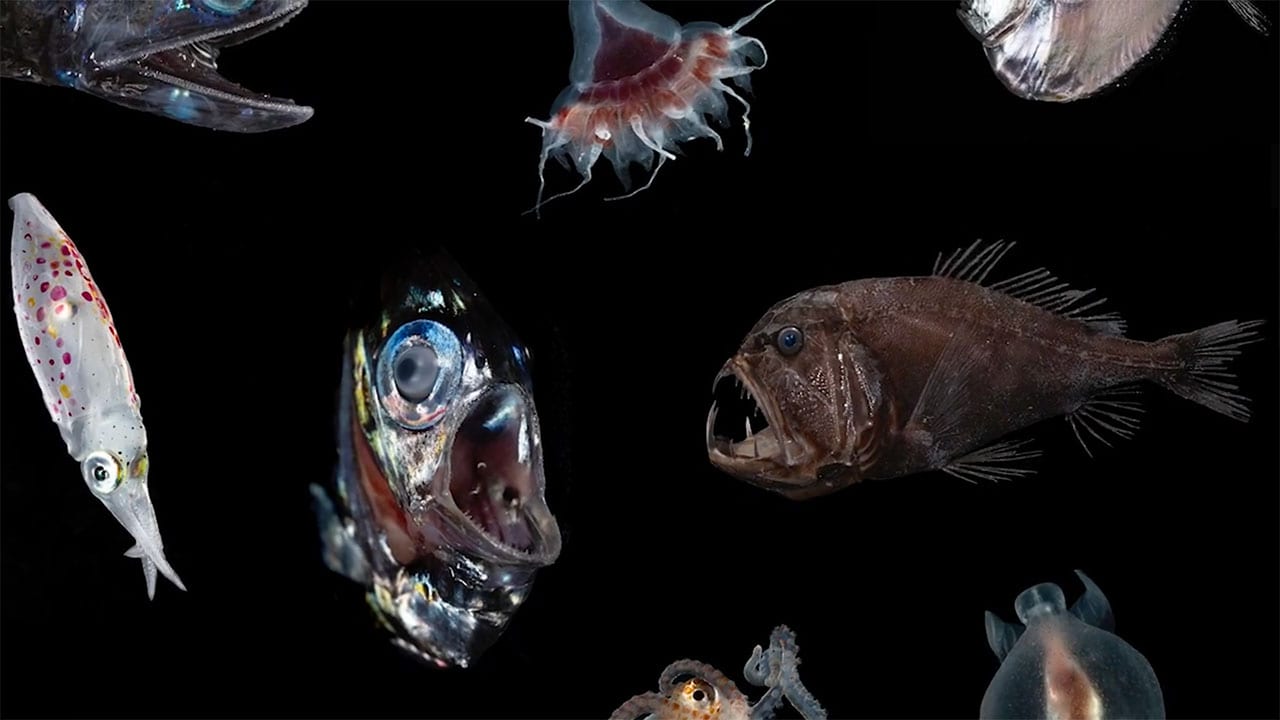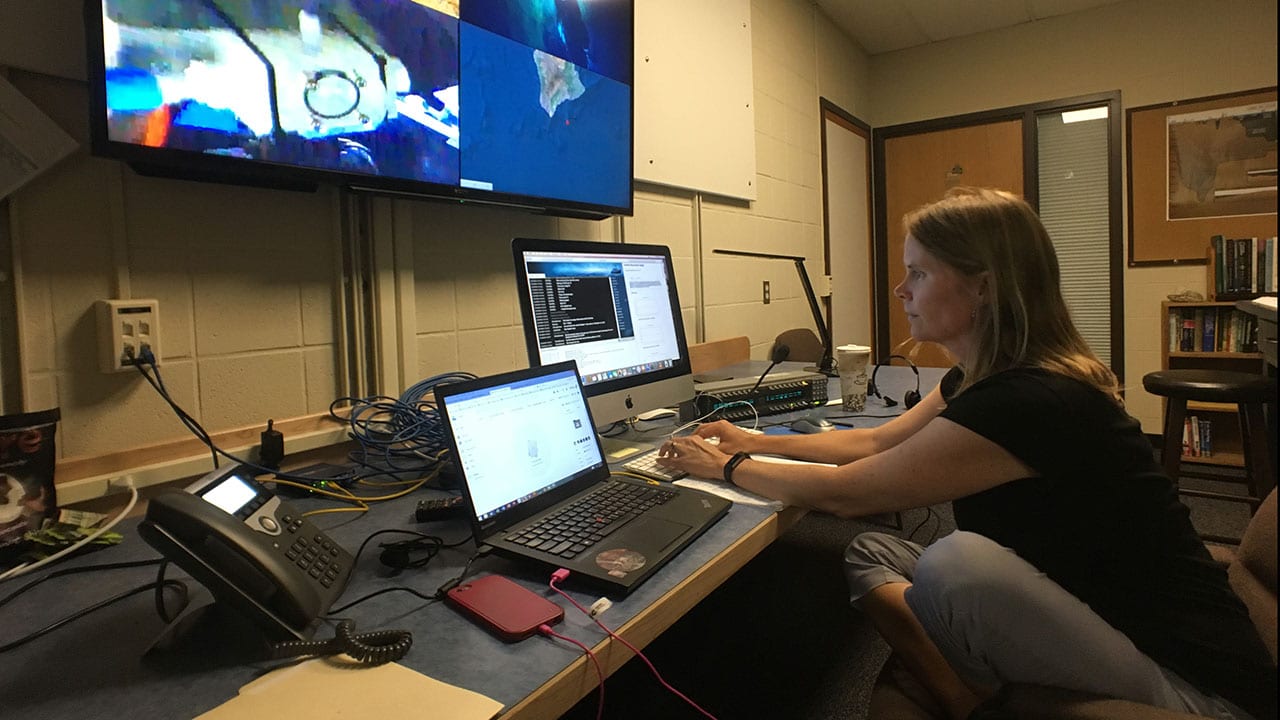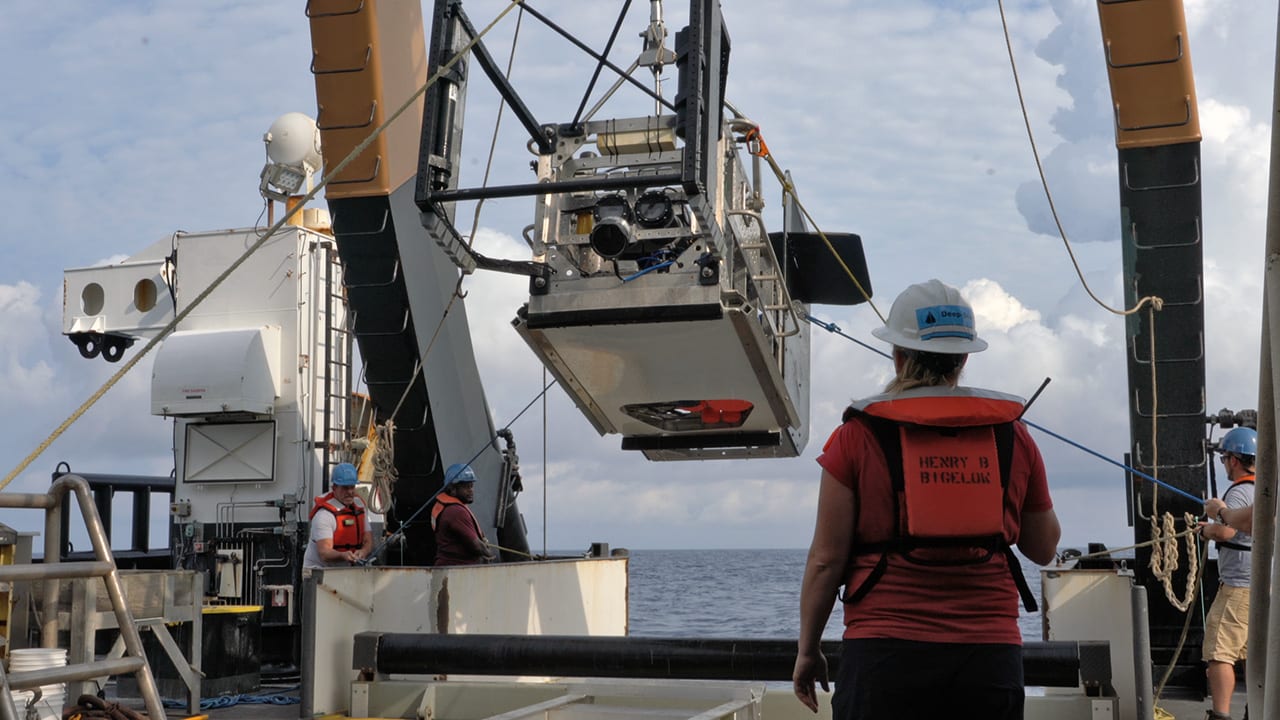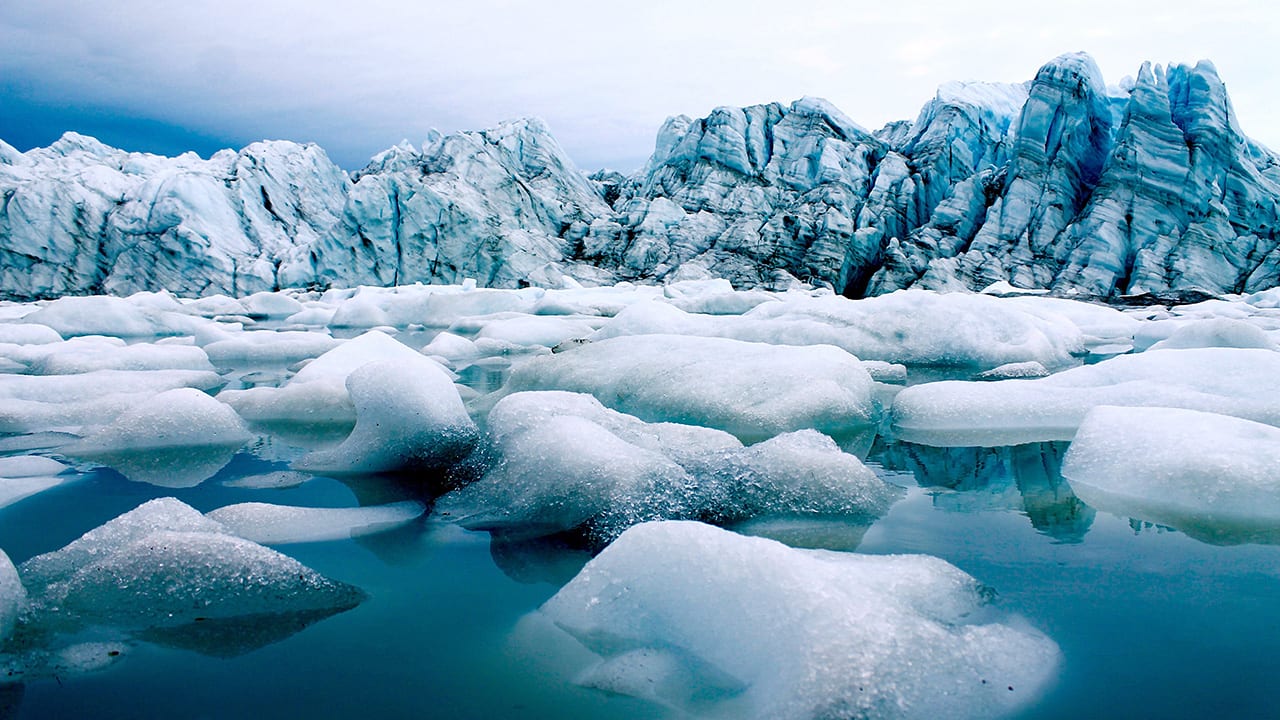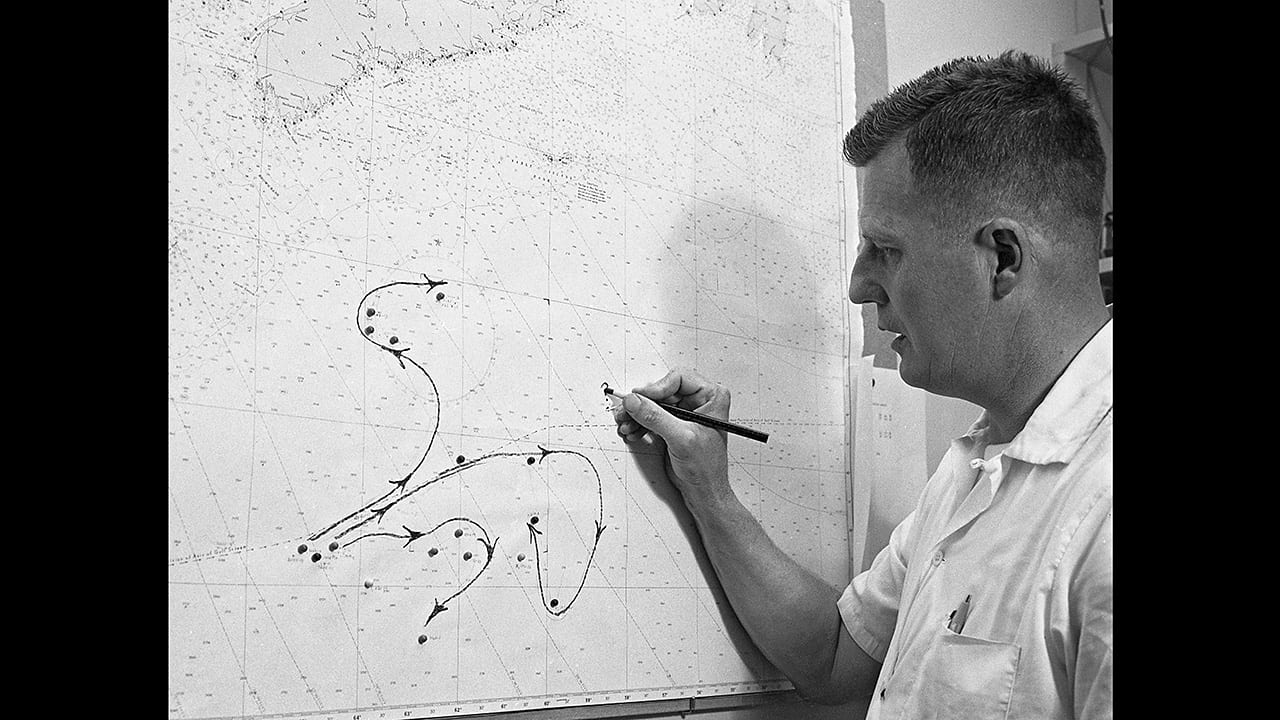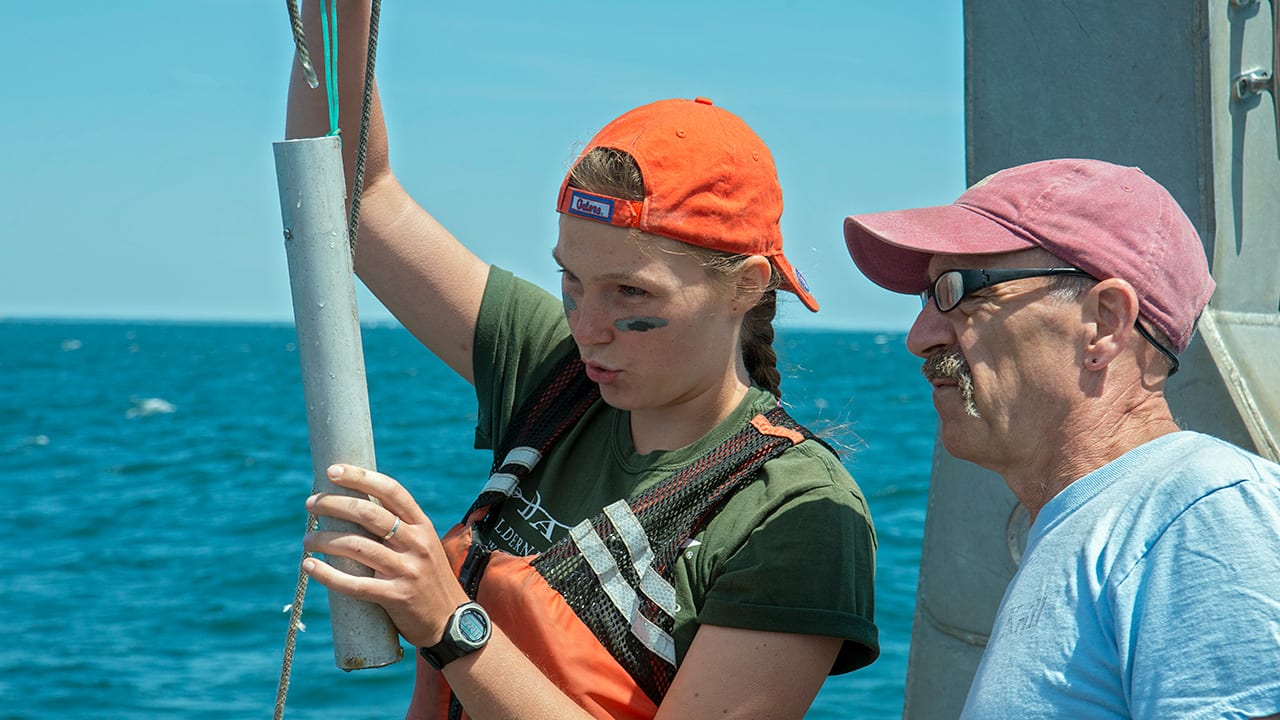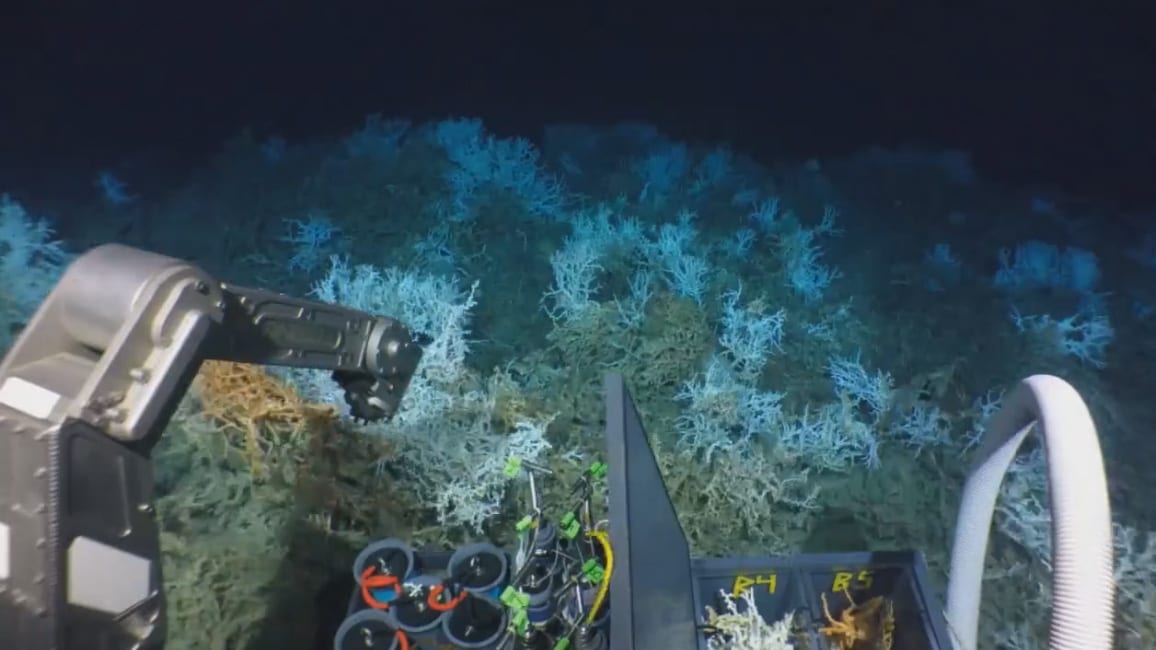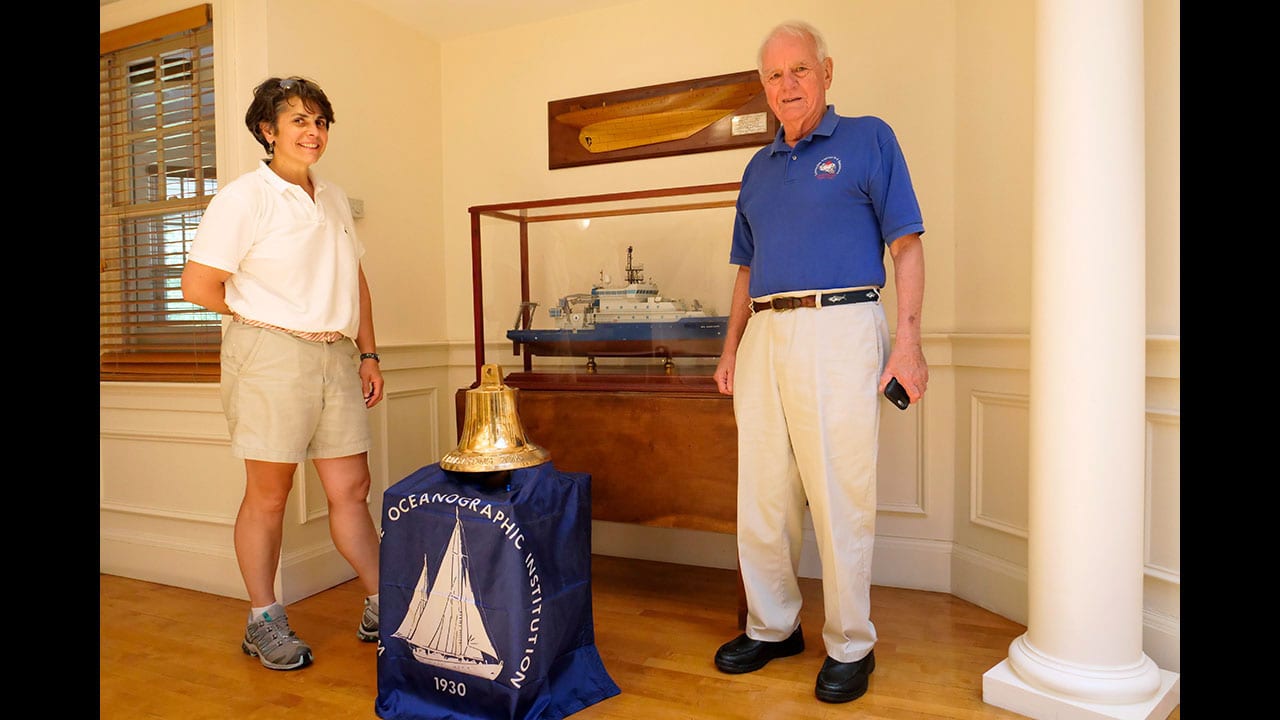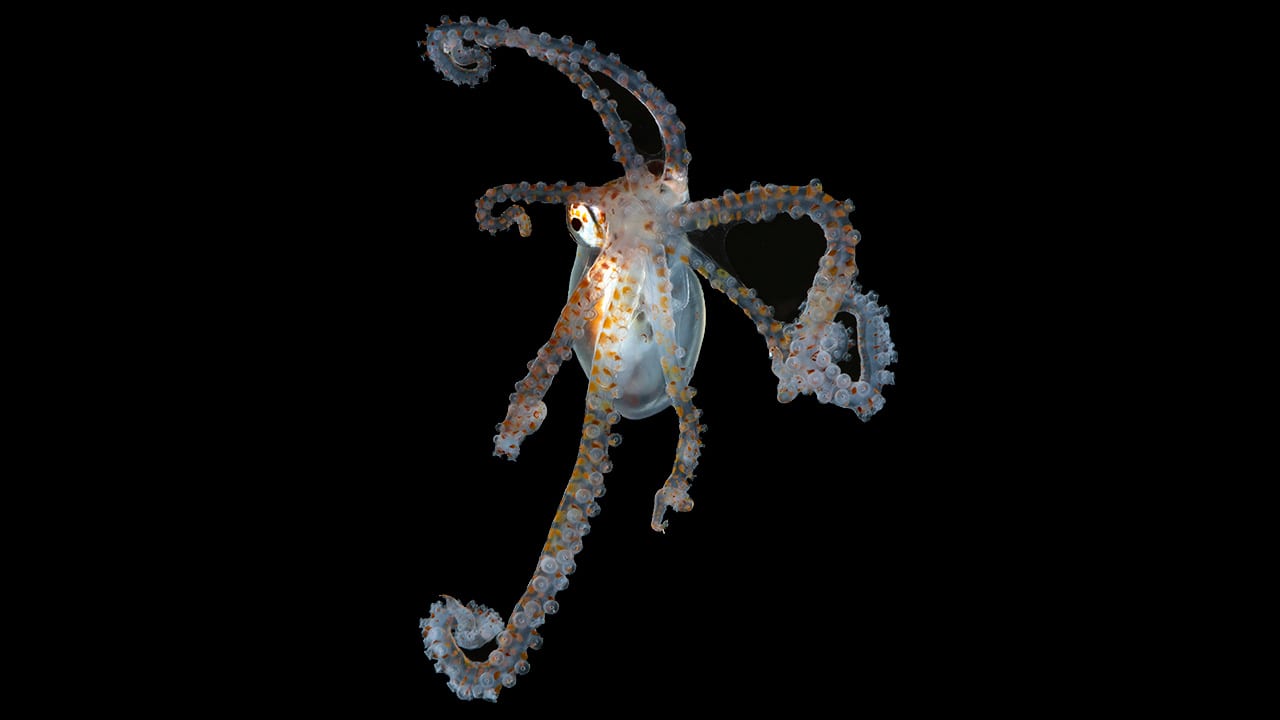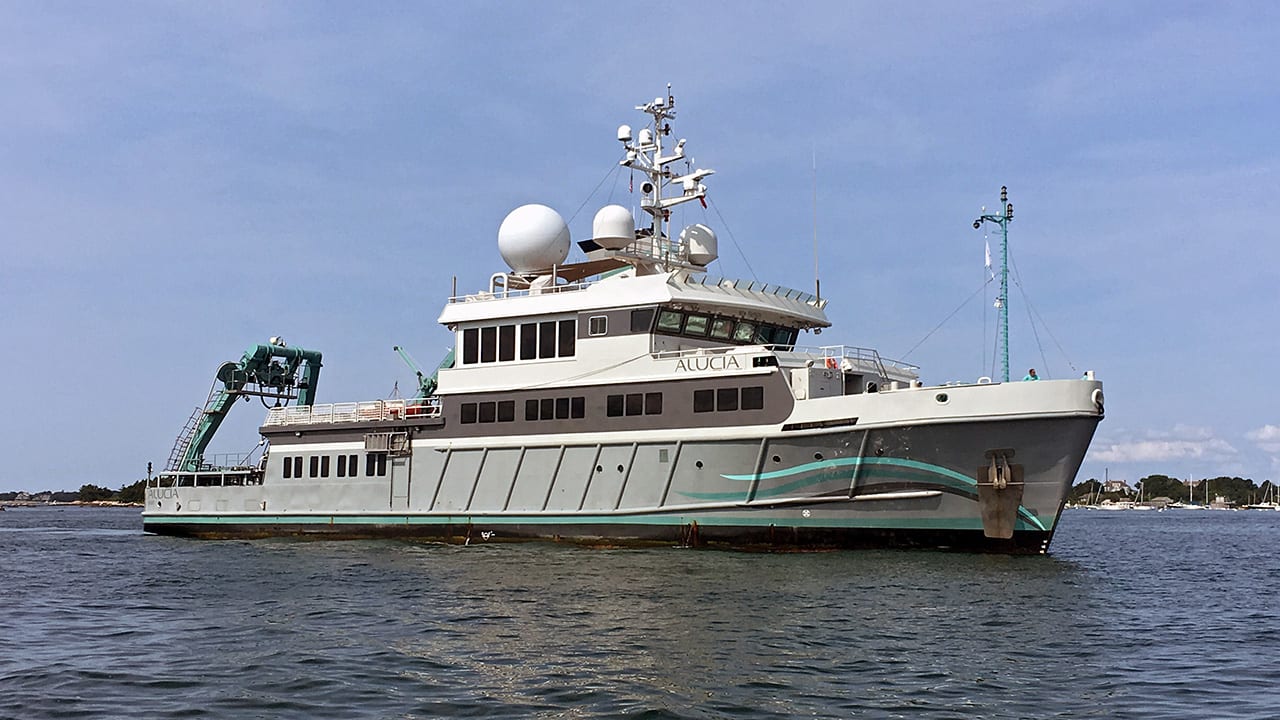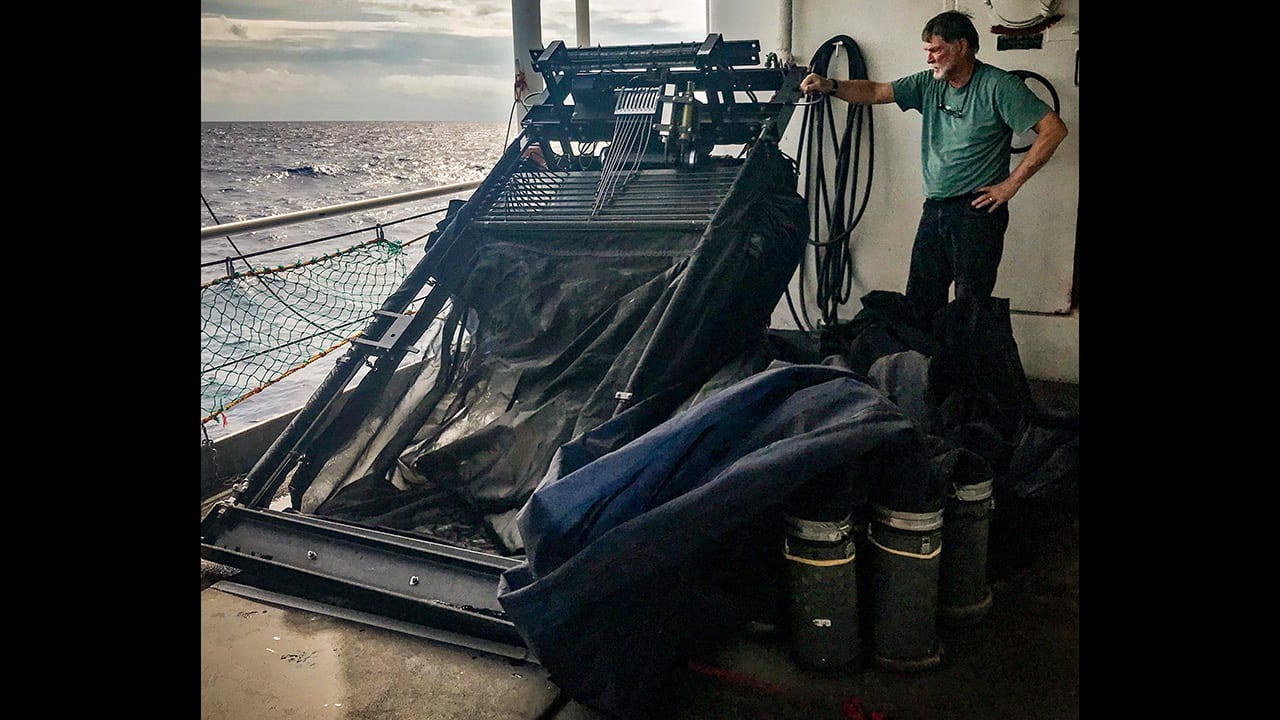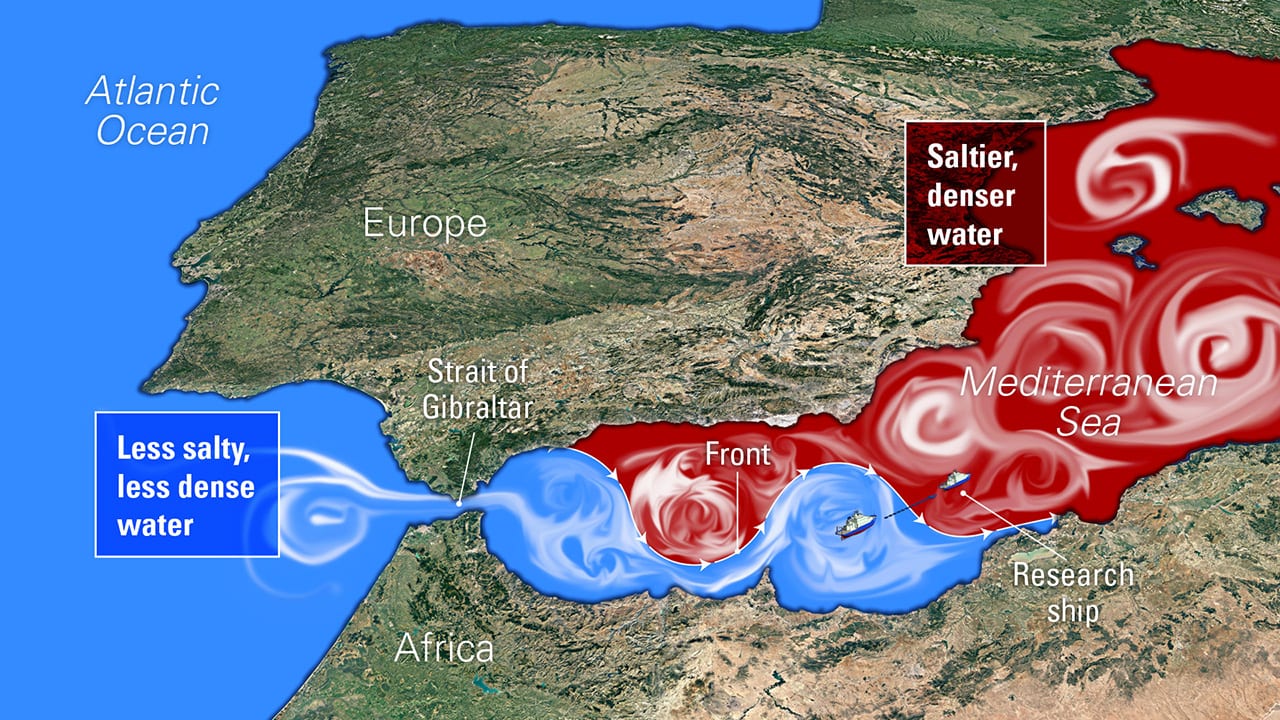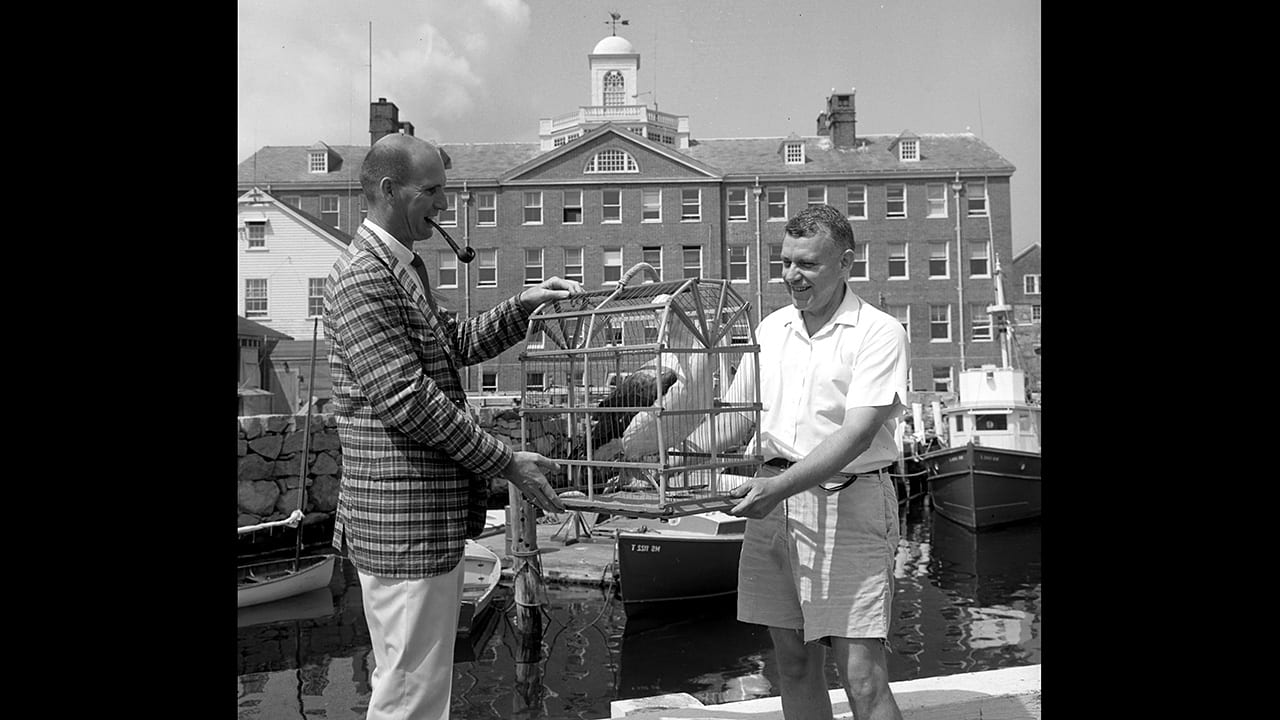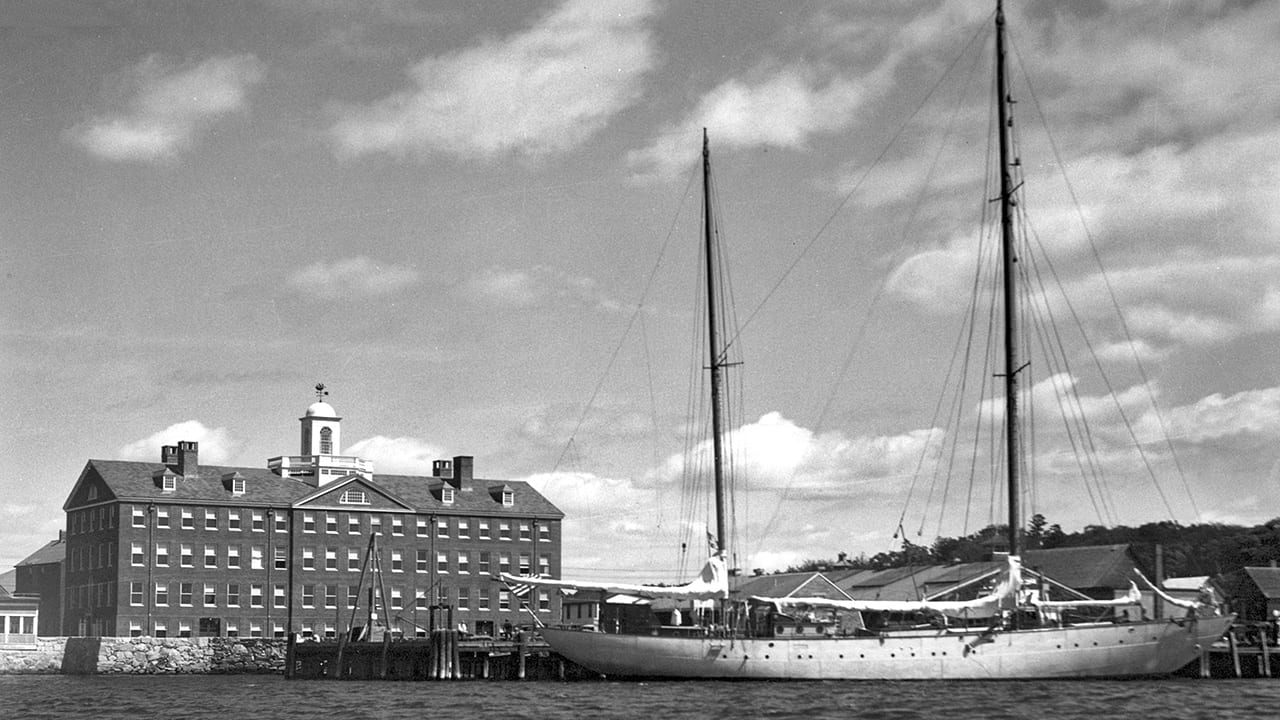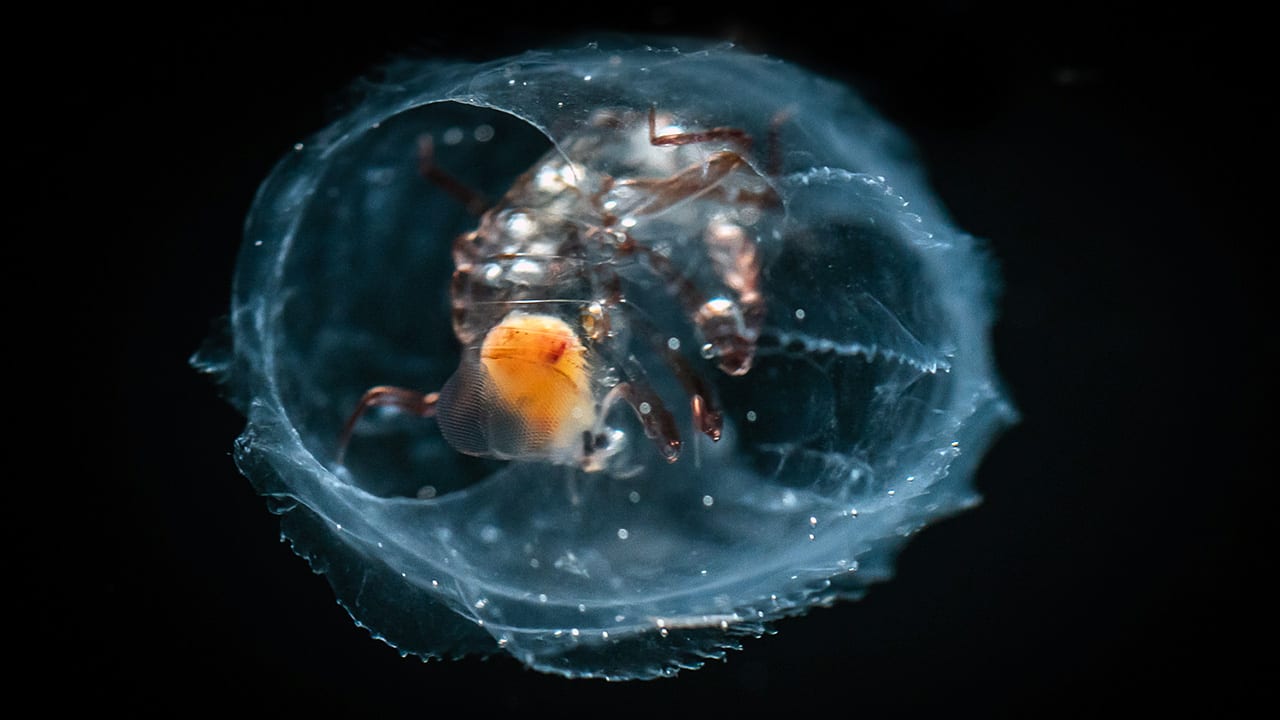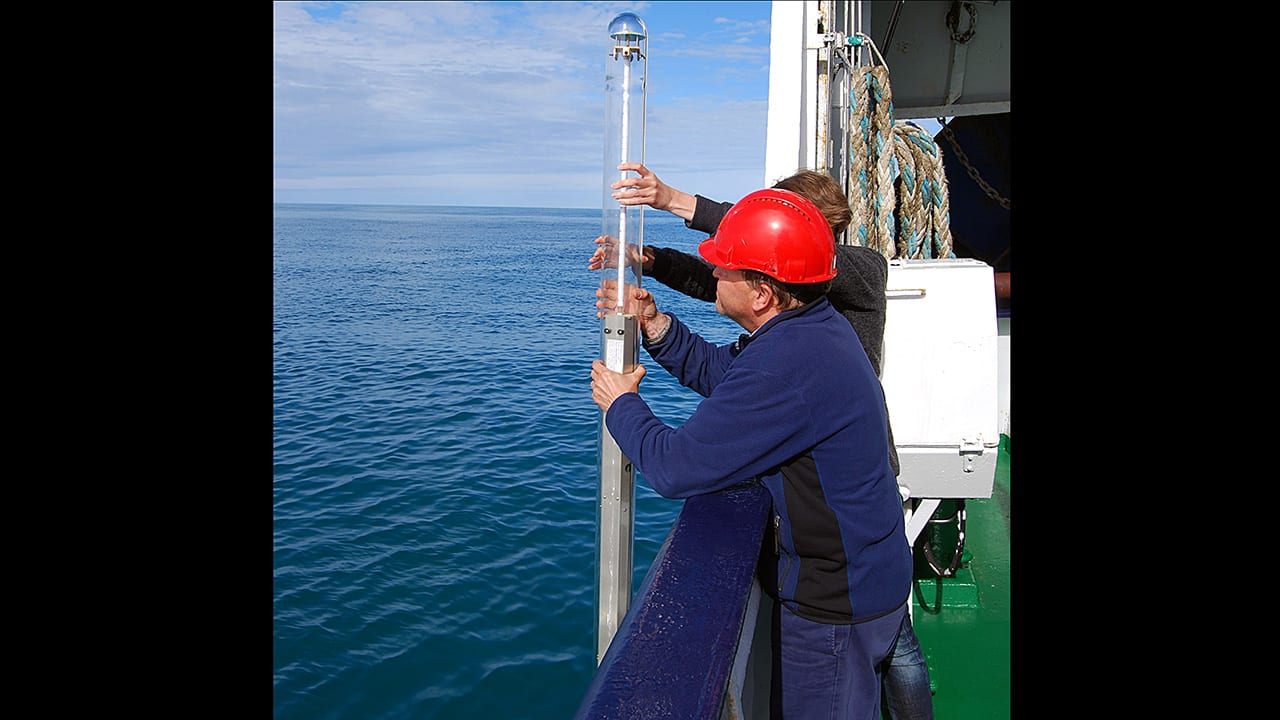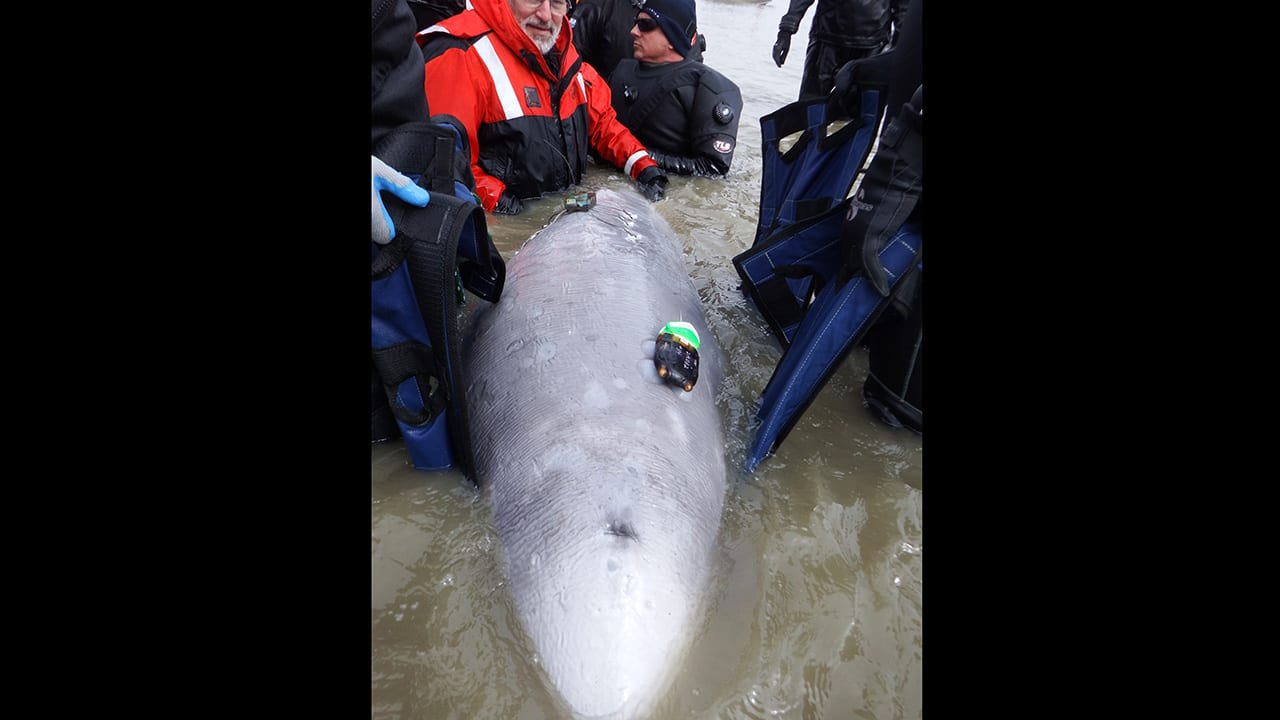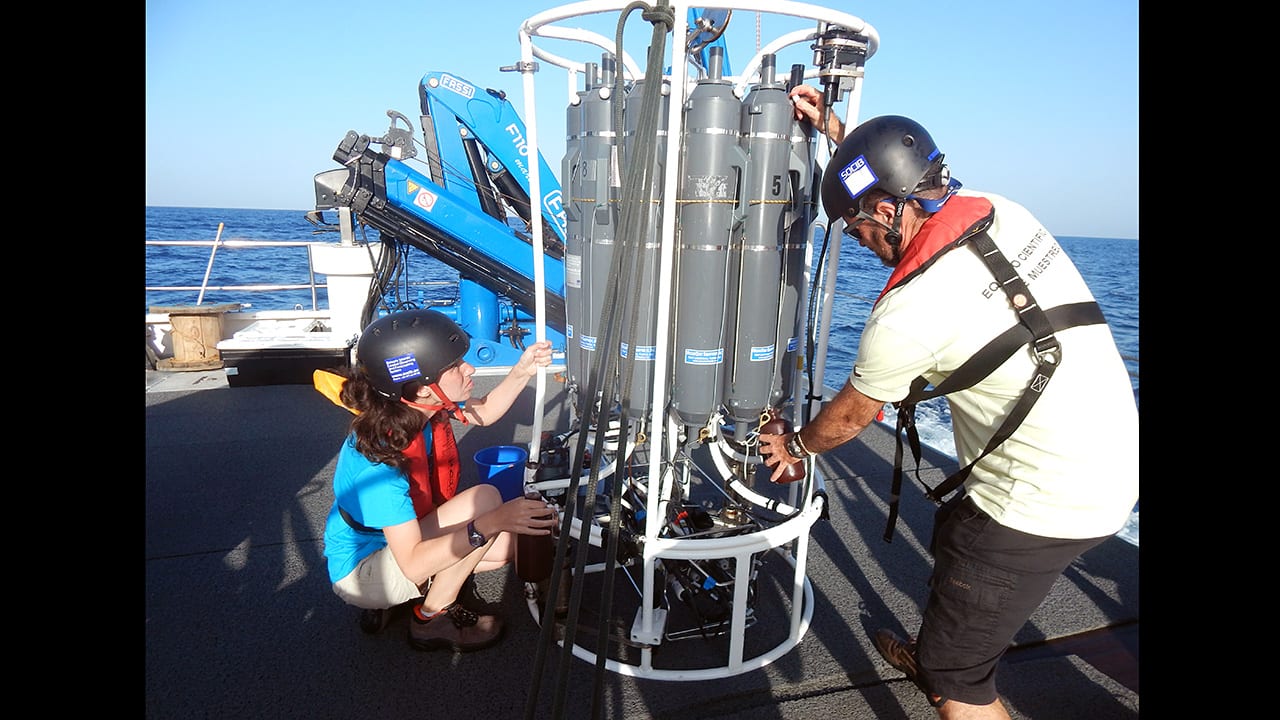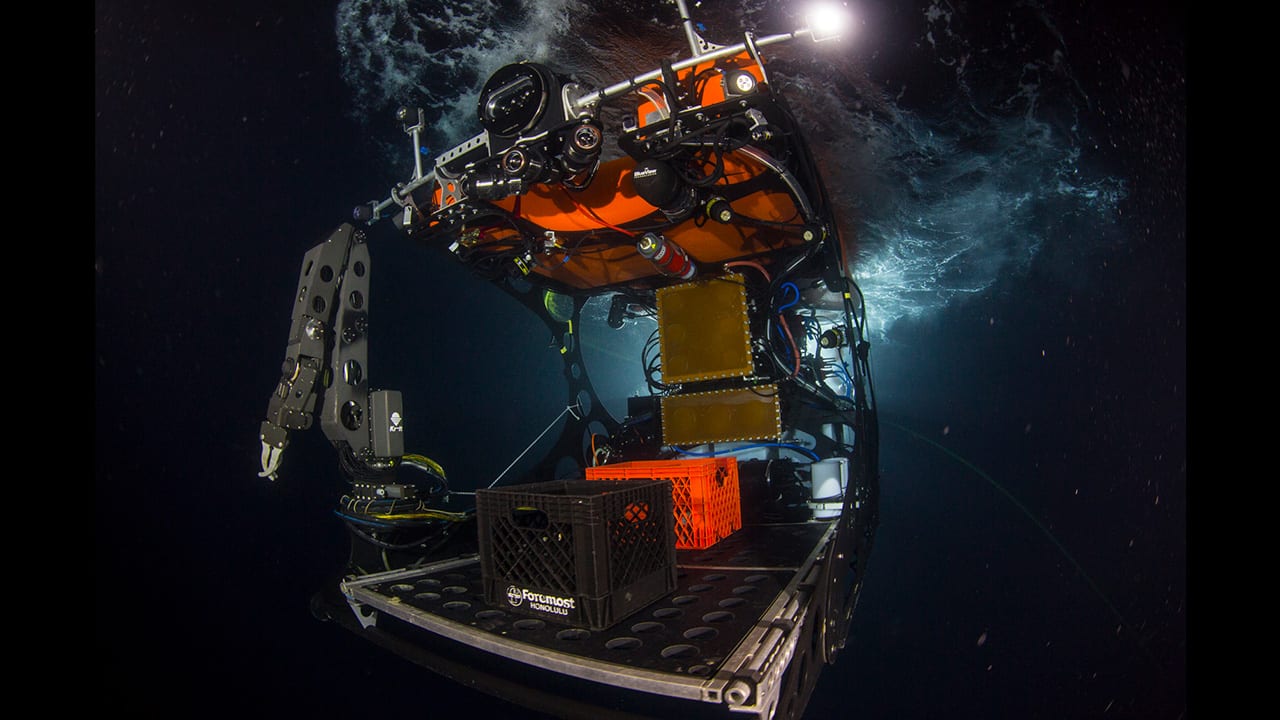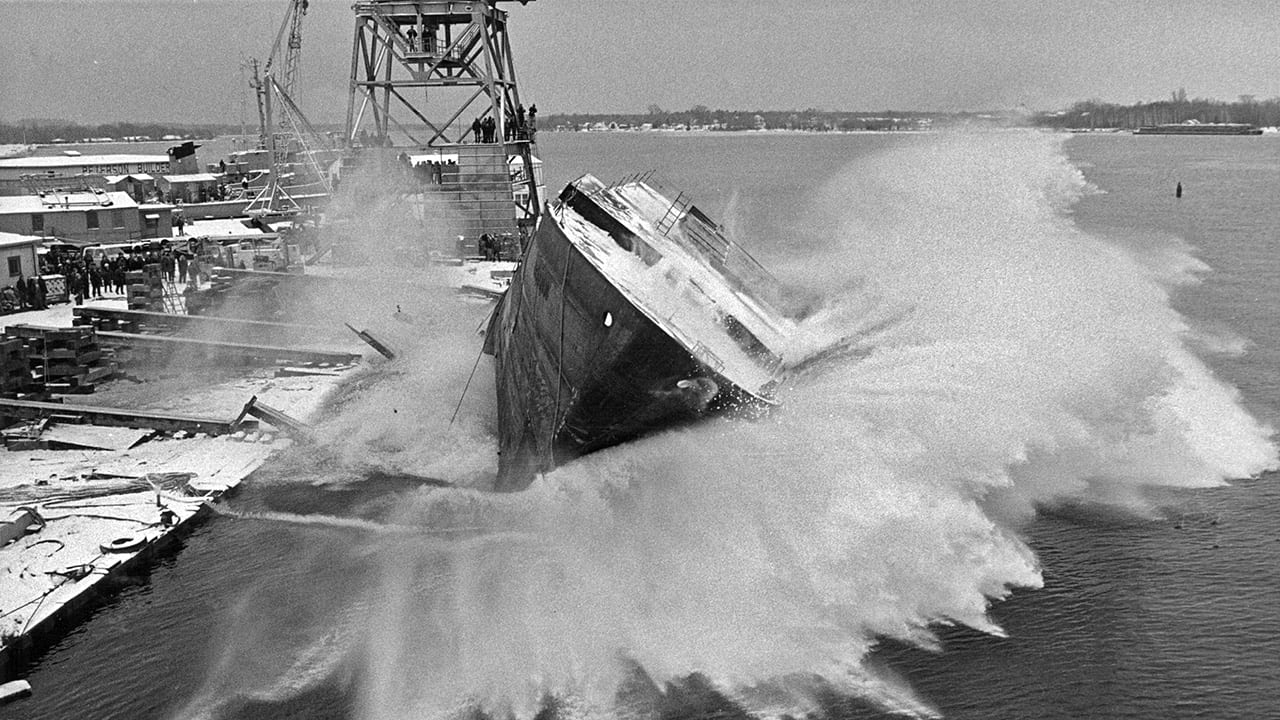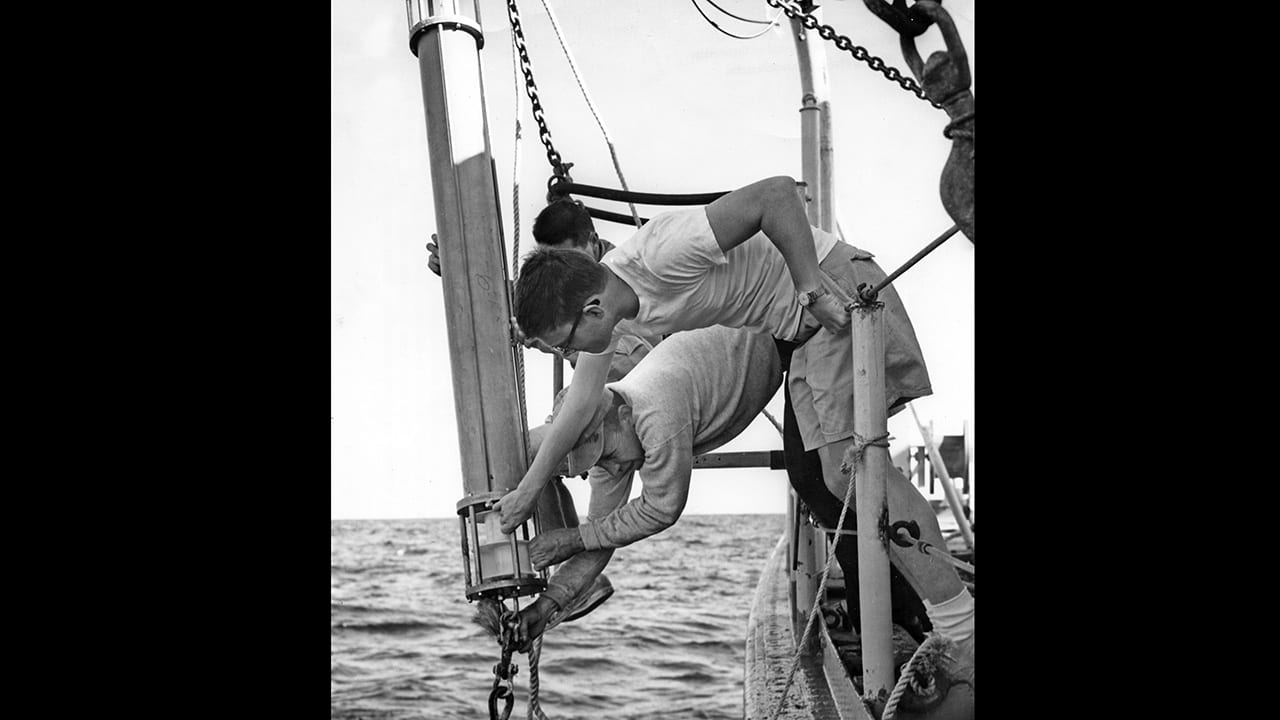Multimedia
Winging It
In 1960, WHOI researchers on the research vessel Crawford devised a novel way of measuring the slope of the seafloor. They took sonar depth measurements from two fixed points about…
Read MoreSentry Returns
The autonomous underwater vehicle (AUV) Sentry is a programmable robot capable of remaining submerged for 24 hours or more while carrying out complex physical, chemical, and biological research. The vehicle…
Read MoreWHOI’s First Ocean Twilight Zone Expedition
Interview with WHOI acoustic oceanographer Andone Lavery on the first expedition to the Ocean Twilight Zone.
Read MoreAll the Comforts of Home
Microbiologist Julie Huber participated on a research expedition on the exploration vessel Nautilus recently without leaving home. SUBSEA (Systematic Underwater Biogeochemical Science and Exploration Analog) is co-led by WHOI geochemist Chris German to…
Read MoreSome Heavy Lifting
WHOI mechanical engineer Kaitlyn Tradd (foreground) directs deck operations on the NOAA research vessel Henry B. Bigelow during a recovery of the towed vehicle Deep-See. Tradd helped to develop and…
Read MoreMelt Down
Summertime ice melt along the Greenland Ice Sheet has sped up in recent decades, more fresh water to flow into the surrounding ocean. The fresh water carries nutrients and organic…
Read MoreA River in the Ocean
Scientists at WHOI have been studying the Gulf Stream for decades. Physical oceanographer Arthur Rocky Miller, shown here in 1960, came to WHOI in 1946 and was among the first…
Read MoreLearning at Sea
Noa Randall (left), a 2018 Summer Student Fellow (SFF), prepares a submersible thermometer to take the temperature of the water in Buzzards Bay from the research vessel Gulf Challenger, with…
Read MoreAlvin Makes an Exciting Coral Discovery
Discover a vast deep-sea coral reef off South Carolina, found by Alvin during Deep Search 2018. Watch the 8-hour dive condensed into just 3 minutes.
Read MorePostcard from Hawaii
On the way to the Loih’i Seamount off the coast of the island of Hawai’i, the exploration vessel Nautilus passed the last remaining location where lava has been entering the…
Read MoreReady to Ring
WHOI Ship Operations project manager Pam Clark and RADM Dick Pittenger stand next to a new ship’s bell destined for the research vessel Neil Armstrong when it returns to Woods Hole…
Read MoreAn Unexpected Guest
This young octopus was photographed in a tank aboard the NOAA research vessel Henry B. Bigelow during WHOI’s first ocean twilight zone expedition earlier this month. “Boo,” as the Atlantic…
Read MoreWelcome, Alucia
The research vessel Alucia arrived in Woods Hole, Mass., for the first time on Saturday, August 25. The ship was re-fit in 2011 and, since that time, WHOI has played…
Read MoreNetting the Deep
A high-tech version of the humble sampling net, the MOCNESS (Multiple Opening/Closing Net and Environmental Sensing System) sits aboard the research vessel Henry B. Bigelow earlier this month, ready to…
Read MoreThe Atlantic Meets the Mediterranean
Through the narrow Strait of Gibraltor, water from the Atlantic Ocean enters the Mediterranean Sea. The Atlantic water is less salty and less dense than saltier Mediterranean water, so the…
Read MoreA High-Flying Success
Scientists from the Woods Hole Oceanographic Institution have gathered many medals and awards, but perhaps none is more coveted than the Albatross Award, the stuffed bird in the cage held…
Read MoreStrong Foundation
The Woods Hole Oceanographic Institution was founded on January 6, 1930, following the recommendations of a National Academy of Sciences Committee on Oceanography. The chair of the committee, Frank R.…
Read MoreBarreling Through the Ocean
An amphipod known as a Phronima is often cited as the inspiration for the alien queen in the 1986 blockbuster movie “Aliens.” It inhabits the sac-like body of a barrel-shaped salp,…
Read MoreRAFOS floats
Scientists deploy a RAFOS float during a research cruise in the Denmark Strait to track the sources of sinking waters of the Atlantic Meridional Overturning Circulation—a key component of the Great Ocean…
Read MoreHearing Tests on Wild Whales
The first hearing tests on a wild population of healthy marine mammals revealed that beluga whales in Bristol Bay, AK, have sensitive hearing abilities and far less extensive hearing losses…
Read MoreSampling Seawater
During a 2017 research cruise in the Mediterranean Sea, MIT-WHOI Joint Program student Mara Freilich and Simón Ruiz from the Mediterranean Institute for Advanced Studies, use an instrument called a CTD (Conductivity-Temperature-Depth) to…
Read MoreWhy the Weight?
Remotely Operated Vehicles (ROVs) typically use tethers for remote control, but as they explore deeper parts of the ocean, traditional tethers can weigh them down. The Nereid HT ROV, shown here…
Read MoreLaunching of a Legacy
In 1975, the newly constructed hull of research vessel Oceanus first entered the water at Peterson Builders shipyard in Sturgeon Bay, Wisconsin. During its 36-year career, Oceanus crisscrossed the Atlantic helping…
Read MoreA Half-Century Ago
Marvel Stalcup (with glasses) and Gus Day launch an early instrument to determine current speeds and directions from the research vessel Crawford circa 1965. Data were recorded on photographic film. Modern oceanographers use Acoustic…
Read More
